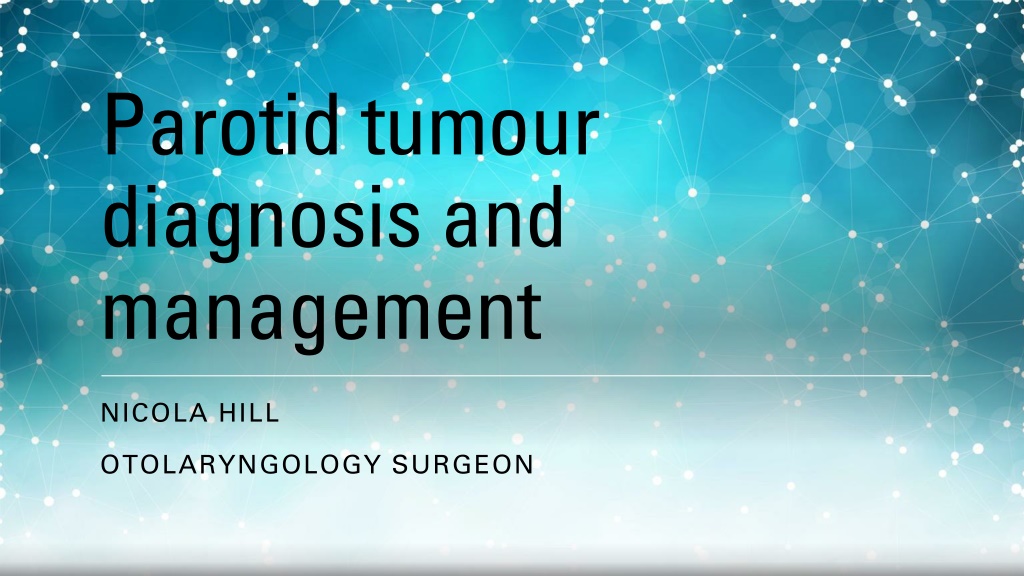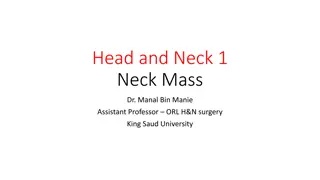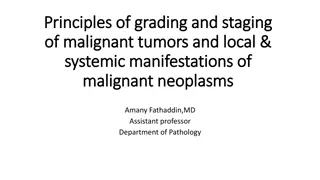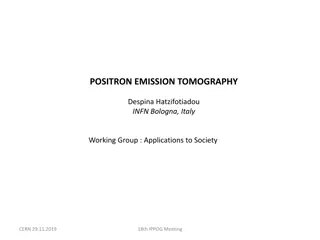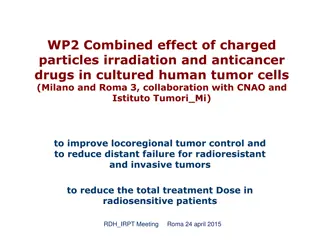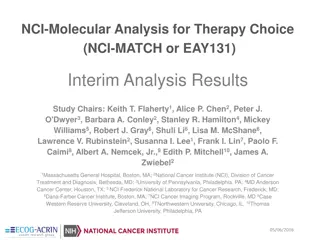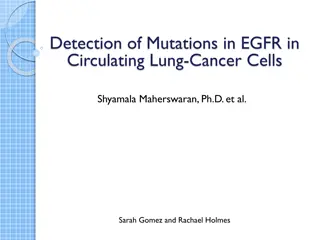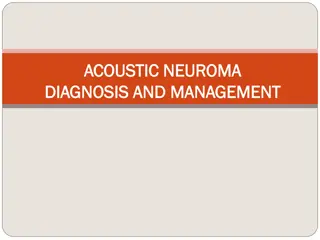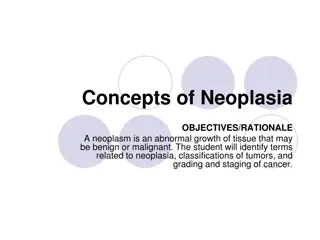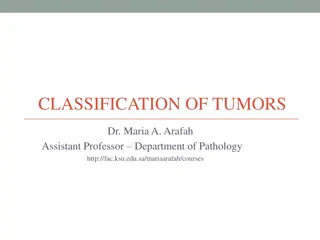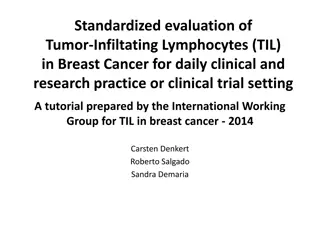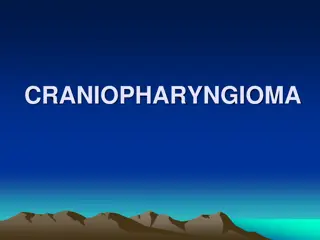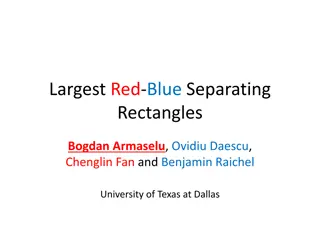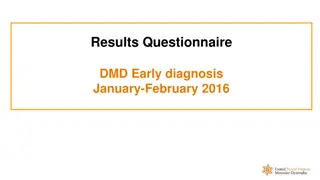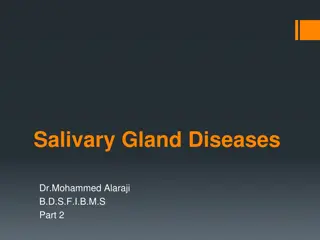Comprehensive Overview of Parotid Tumor Diagnosis and Management
This comprehensive guide covers the diagnosis and management of parotid tumors, including anatomy, differential diagnosis, and management strategies. It discusses the approach to evaluating patients with neck lumps, differential diagnoses to consider, and the management techniques for both benign and malignant neoplasms. The content elaborates on the specific characteristics of benign and malignant tumors, emphasizing the importance of thorough history, examination, and diagnostic procedures for accurate diagnosis and treatment planning.
Download Presentation

Please find below an Image/Link to download the presentation.
The content on the website is provided AS IS for your information and personal use only. It may not be sold, licensed, or shared on other websites without obtaining consent from the author. Download presentation by click this link. If you encounter any issues during the download, it is possible that the publisher has removed the file from their server.
E N D
Presentation Transcript
Parotid tumour diagnosis and management NICOLA HILL OTOLARYNGOLOGY SURGEON
Points to cover Anatomy Presentation Differential Management Potential questions
Thank you for seeing this patient with a neck lump
Approach? History general age, sex, general medical conditions, medications Smoking? Skin cancer Examination Neck exam Scars from skin excisions Full oral exam etc Neck levels Facial nerve
Whats the differential diagnosis? Neoplasm Benign (pleomorphic adenoma, Warthin s tumour) Malignant (primary salivary gland, metastatic SCC, lymphoma, metastatic melanoma, other metastases) Use a surgical sieve (COTDIM) Congenital Branchial cleft abnormality Lymphatic malformation Inflammatory/immune/idiopathic Abscess Sjogren s Drug-related Lymphoepithelial lesions with HIV Metabolic TB/sarcoid!
Management Full history and examination Fine needle aspiration ?clinic/USS-guided About 95% sensitive/specific Core biopsy controversial CT scan
Benign neoplasms The most likely diagnosis Rule of thumb - Parotid 70% benign, submandibular 50%, minor salivary 30%) Pleomorphic adenoma = 80% Women, 40s, Caucasian 1-5% recurrence rate Warthin s tumour = 5% Men, 50-60s 10% multicentric, bilateral Cysts can get inflamed or bleed Adenoma, oncocytoma, monomorphic tumour
Malignancy Glandular secretory tissue + supporting connective tissue + blood vessels + lymph nodes VII paralysis, pain, trismus Mucoepidermoid carcinoma 30% High vs low grade distinction; spreads to regional nodes 1st Adenoid cystic carcinoma Propensity for perineural spread, skip lesions, distant metastases Malignant mixed, acinic cell carcinoma, adenocarcinoma Squamous cell carcinoma
Next steps depend on diagnosis Benign Excision vs observation Factors that might influence Age, medical condition, patient preference Rule of thumb - Carcinoma ex pleomorphic adenoma 1% per year Malignant Multidisciplinary meeting Surgery/surgery and post-operative radiation/(chemo)radiation/palliative care Rule of thumb VII sacrificed only if visibly involved
Malignancy Management depends on features of tumour Positive features Low grade Less than 4 cm in greatest diameter No local invasion No lymphatic/neural/vascular No evidence of regional node involvement Primary (not recurrent tumour) Staging
Operations Partial parotidectomy (but not enucleation) Superficial parotidectomy Total parotidectomy +/- neck dissection
Appropriately worked up and consented patient under general anaesthesia Superficial parotidectomy Preparation head ring and shoulder bolster, marking, facial nerve monitor, local, paint and drapes Skin incision
Modified Blair Preauricular, around the lobule of the ear towards the mastoid tip, extending into a neck crease Some surgeons do modified facelift incision
Subplatysmal flap Identify structures parotid, sternomastoid, great auricular nerve Vessels -superficial temporal and occipital arteries (ECA) -superficial temporal and maxillary veins > RMV > anterior (+facial = common facial) + posterior (+ posterior auricular = EJV) divisions Identify VII
Finding VII 1. Tragal pointer 2. Tympanomastoid suture 3. Posterior belly of digastric Working on a broad front, using all 3, haemostasis, VII monitor 4. Retrograde dissection 5. Via mastoidectomy
Postoperative care Overnight stay, E+D Thromboprophylaxis Drain out when <20-30mL/day Analgesia ROS 1/52 No antibiotic
Complications General GA, DVT, bleeding, infection, scar Specific Nerve-related VII Great auricular = numb earlobe Gustatory sweating (Frey s syndrome) Rule of thumb 90% on test, 50% if ask, 10% complain Seroma Salivary fistula
Short case and differential Superficial parotidectomy steps, complications + management Potential exam questions How to identify the facial nerve, what if you can t Cut the nerve?
